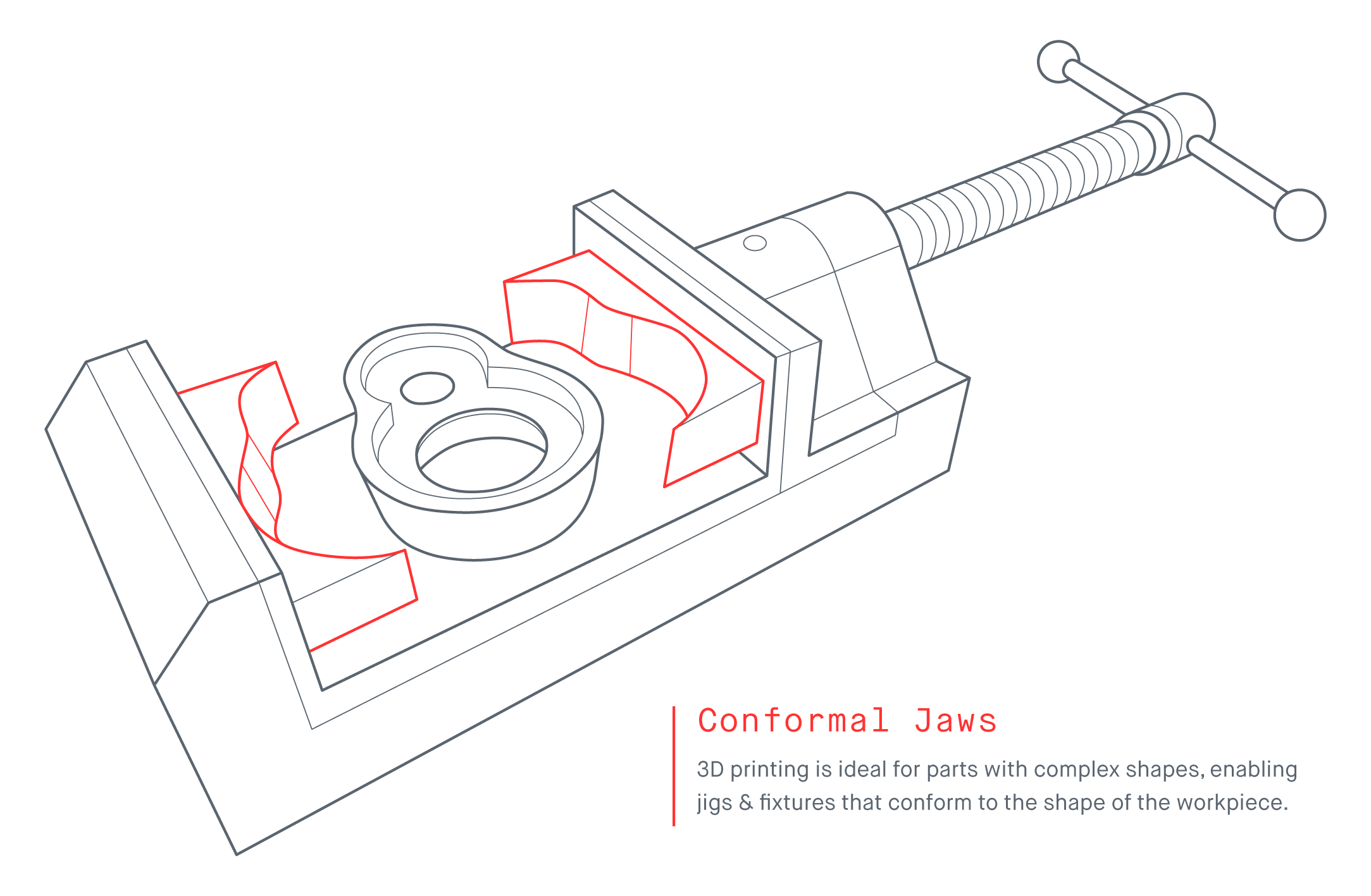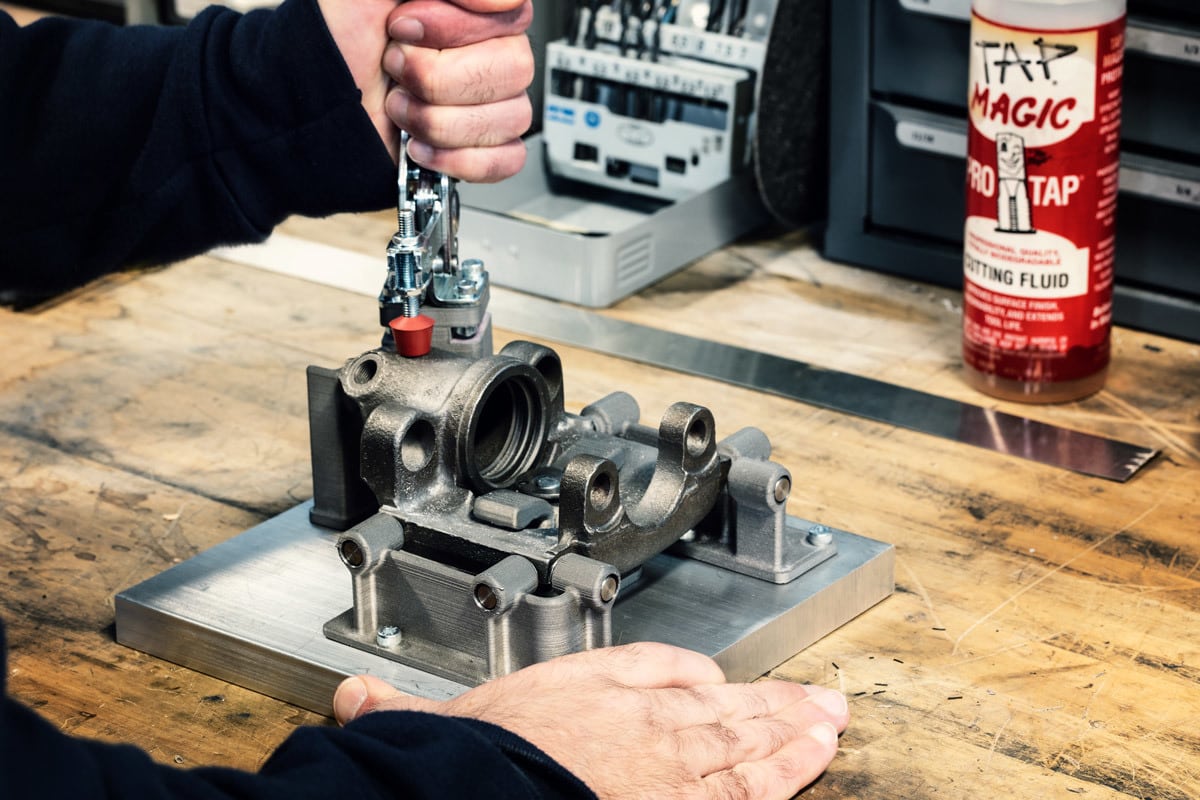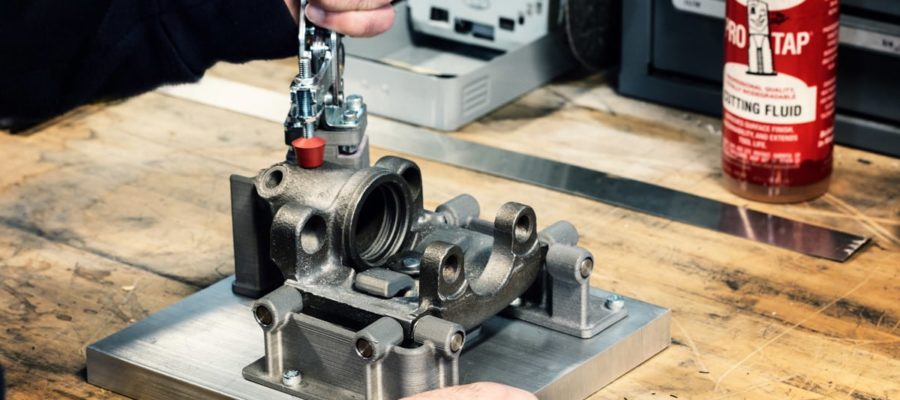Crucial to lean manufacturing, jigs and fixtures provide repeatability and precision in parts and assemblies, however, producing them can have major implications for product development, cost, and lead time. Custom jigs and fixtures rely on metal 3D printing as it plays a significant role in the optimization of production.
So what defines jigs and fixtures? They are tools which hold, support, and locate as it is being manufactured or even machined. The major difference here is that a jig can also guide the operating tool. They are mainly used for the following:
Workholding
Welding
Assembly
Other subtractive manufacturing (milling and turning)
Measuring parts, dimensions, broaching, boring holes, welding and assembling are the many operations which consist of part manufacturing. Consistency and reliability across all manufacturing operations increase as production volume begins to expand. This ensures that parts and assemblies perform in their application. A jig or fixture is necessary to facilitate a simpler and more repeatable process which terminates the need for highly-skilled operators. Eventually, this ends in the reduction of manufacturing costs, as well as a shortened product development timeline.
Ductile parts (plastic, sheet metal, and materials with thin walls) often use common workholding solutions. Some of which have the potential to source local deformation. Furthermore, conformal jigs and fixtures are exemplary in such situations as they have the ability to conform to the shape of the part and provide even distribution of the clamping forces. Creating both intricate and conformal shaped can be challenging when using traditional manufacturing.
Conventionally, the production of jigs and fixtures are tenuous, high in cost, and time consuming, especially if outsourcing to a third-party manufacturing firm is required.

Why 3D Print?
Design flexibility is one of the main benefits which comes along with 3D printing. Cost and fabrication time don’t always expand with regards to part complexity. This means conformal jigs and fixtures which meet the needs of application have the ability to be much easier and cheaper to produce. Processes such as Bound Metal Deposition™ can print-in-place assemblies and part consolidation. This further simplifies the fabrication process. When comparing 3D printing to traditional manufacturing, 3D printing doesn’t require a dedicated operator. BMD can print parts using closed-cell infill . Metal parts that need to withstand high heat and, or, loading, has the ability to leverage infill for lightweight strength while adhering to the application requirements.
By using custom jigs and fixture in-house, manufacturers realize there is a significant reduction in lead time and increase production bandwidth by opening up other machinery within the shop. Cutting the need for third-party machine shops allows rapid design iteration to optimize the jig/fixtures specific needs.

Metal VS. Plastic
Most tooling will perform better if it is made from metal, although there have been many advances in plastic. Tooling is typically used in areas that have high heat and are often exposed to abrasive chemicals and media. Plastic parts will distort and warp in such environments and will eventually begin to dissinigrate. Furthermore, it is proven to be more durable than plastic, so for tooling applications where a significant force will be applied, metal tools are necessary in order to prevent deflection and preserve repeatability.
Other 3D printing methods such as Powder Bed Fusion (PBF), showcase processes which are too costly. This is because of expensive hardware and materials. They also need several secondary operations where labour costs are added, as well as lead times. Moreover, manufacturers who have PBF machines in-house, using them to produce one-off jigs and fixtures isn’t cost-effective. Using The Desktop Metal Studio System™ metal 3D printer, users are able to produce parts both quickly and affordably.
The main thing that lays crucial to lean manufacturing are custom jigs and fixtures. Additive manufacturing allows the design flexibility to make custom jigs and fixtures. Meanwhile, in-house metal 3D printing gives the ability to lower both production costs and timelines. This reduces the need for a dedicated operator or even third-part machine shop. It also increases the bandwidth of other machinery on the shop floor.
